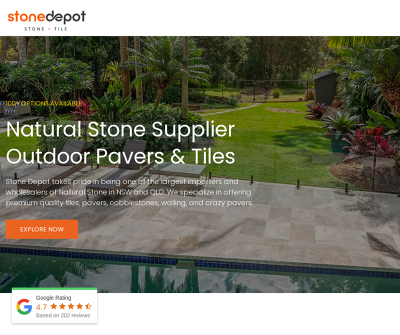A guide to Pool Coping Tiles and easy installation tips
Pool Copings, in simple words, are the edges of swimming pools. These are key features of pools, keeping various functions in mind. Copings give a safe grip to swimmers while entering or exiting the pool and keep water or debris from going in behind the pool shell. You can also transform the look of pools with copings.Styles of Pool Copings
There are two main styles of pool copings. One is Bullnose, wherein the edges have a rounded finish. Bullnose coping offers a smoother look and feel to the pool. Because of the rounded edge, the chance of injury gets reduced by many folds.
The other style of pool copings is Pencil Edge. The Pencil edge finish appears square from the front but has a rounded edge on the top edge or top and bottom edge of the stone. The rounding has only a small diameter like a pencil.
Here are a few easy and basic steps to install Pool Copings with natural stones. First things first, get your tools and machines together to complete the installation task.
A few commonly used hand tools- measuring tape, a trowel a square, a level measurer, a caulking gun, a mallet, a spatula
A grinder with a diamond blade
Wheelbarrow, buckets, shovel
A concrete mixer
Safety gear - Gloves, eye protection, dust mask, protection for ears
Once you have the tools and machines in place, follow the steps to coping installation.
Step 1: Lay the coping foundation
The pool pavers or surrounding patio pavers might be set on a bed of gravel and sand. However, copings need a concrete base. Since swimmers sit or stand on the copings, the foundation must be strong enough to hold the stones. The size of the pool coping tiles will help you decide the size of the concrete beam.
All you need to ensure is that the beam’s surface is compact and sturdy. Also, add a layer of gravel as a base for the concrete beams. The size of the beam will help you build the forms. Then pour the concrete mixture.
Step 2: Set up the beam
After you are done laying the concrete, eliminate the forms and even out the imperfection from the surface. The coping installation will be easier if you spend more time preparing the surface of the concrete.
Step 3: Plan the layout of pool coping stones
At this stage, you will start laying the coping tiles. Measure each coping stone. Also, consider the width of the joints between each stone. Mark the area where the tiles will be laid and where the joints will fall. Marking the area will help you see the size of the stones and where to cut them from. Large-format stones are aesthetically pleasing and have lesser grout joints. Therefore, it is advisable to adjust the stones so that small stone pieces can be avoided.
Step 4: Pool coping tiles installation
The coping tiles should now be set in place. It will not take much mortar or adhesive to get the tiles level with one another if the beam's surface has been properly prepared.
Whether the pool's shell is made of fiberglass or brick will have some bearing on the kind of glue you use and how you apply it. It is crucial to utilize a flexible adhesive if the fiberglass liner reaches far enough beneath the pool coping tile. If necessary, a mortar-based glue can be employed if the pool's walls are made of masonry.
Step 5: The expansion joint
Never use mortar to seal the gap between the patio pavers and the pool coping tiles. To account for the variations in movement between the patio pavers and the pool, that joint needs to be able to expand and compress.
Put a foam backer rod into the junction to do this. Self-levelling caulk should be used to fill the joints. Then topple with some fill material, such as sand. The expansion joint will more naturally blend in after that final phase.
Here are a few useful tips to make the job easy:
Use dustless tools to keep the environment tidy and protect yourself when installing pool coping tiles.
Spray or sponge the concrete and the underside of the coping stones with polyurethane glue if you are using one.
Sand the surface of the fiberglass liner under the coping to improve adhesion.
Outsource the installation to professional
Even though there are several straightforward DIY projects, installing pool coping tiles is not frequently one of them. Even many respected construction companies occasionally commit errors that end up costing homeowners a tonne of money. As a result, many homeowners decide to research their alternatives until they find a masonry or pool company that is trustworthy and has a proven record of accomplishment of success.
Summarizing
Pools necessitate a large financial investment. If you are attempting to save money, installing the pool coping is one of the easier project components you can DIY. Get the correct tools, the appropriate pool stones, and assistance to finish the installation. We hope that this article was able to emphasize the significance of pool copings and a simple installation process.
